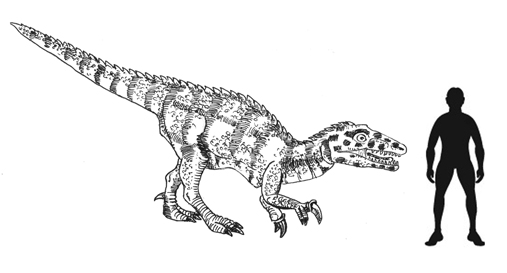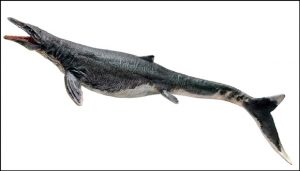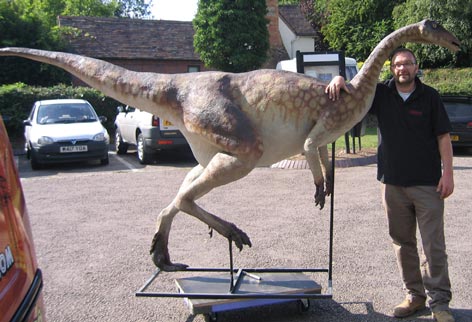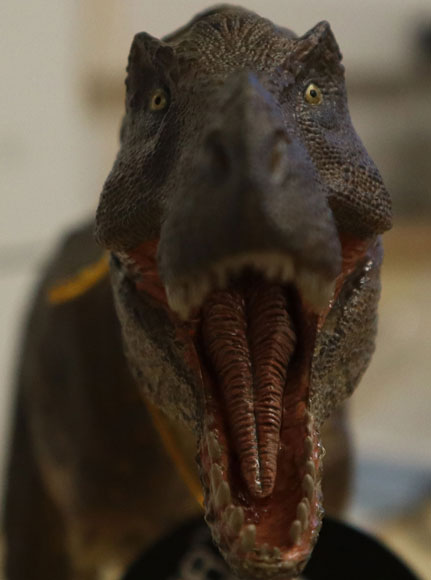Evidence of Stone Tool use by Australopithecus afarensis
The fossilised remains of two ancient animal bones dating from 3.4 million years ago discovered in Ethiopia have put back the use of stone tools by early hominids by some 800,000 years according to a new scientific study.
Researcher Zeresenay Alemseged of the California Academy of Sciences believes that the bones show evidence of being cut and smashed by stone tools, this could be the first evidence of stone tools used by a species of Australopithecus (A. afarensis).
Australopithecines
The Australopithecines represent an extinct group of small but upright-walking, ape-like human ancestors that lived from approximately 4.5 million years to about 1.4 million years ago. Australopithecus afarensis is estimated by scientists to be the most likely ancestor of the human lineage. This particular species was named as fossil remains were first found in the Afar region of northern Ethiopia.
Perhaps the most famous of all the early hominid fossils known is that of “Lucy” a female Australopithecus afarensis, nicknamed “Lucy” after the discoverers were listening to the Beatles track “Lucy in the Sky with Diamonds” when the fossils were first located. Known in the scientific community by the slightly less inspiring name of A. L. 288 this early hominid dates from approximately 3.2 million years ago and about 40% of the skeleton was recovered. “Lucy” stood a little over one metre tall and importantly, the limb bones show that she walked upright.
Early hominid fossils are extremely rare and it is likely that this particular species was quite widespread across central and east Africa. The large distance between the fossil sites has led scientists to postulate that this particular species of ape-man was quite widespread.
Examples of Stone Tools on Display in a Museum

A collection of typical Stone Age Tools. Picture credit: Everything Dinosaur.
Picture credit: Everything Dinosaur
Commenting on the conclusions drawn from the study Zeresenay Alemseged stated:
“We are putting stone tools in their hands!”
However, other palaeoanthropologists have urged caution.
The authors of the report state that the bones indicate that human ancestors used sharp stones to carve meat from the carcasses of large animals and other stones to smash bones to get to the marrow. Being able to feed on marrow would have been very important to our ancient ancestors. This foodstuff would not be readily accessible to other predators and even if a carcase had been picked clean by vultures and other scavengers, early hominids could still get a highly nutritious meal by breaking the bones and feeding on the protein rich marrow inside.
Some scientists have suggested that the ability to feed on protein rich marrow may have been crucial in the development of larger brains.
One of the bones analysed belonged to a herbivore about the size of a modern cow, the other bone in the study is a leg bone from an animal about goat sized. No stone tools were found at the site.
The research team have also concluded that these fossils represent the earliest evidence for meat-eating amongst hominids. The study authors attribute the stone tool use to A. afarensis as no other hominid species is known from that region and rock strata. “Lucy”, herself was discovered in the same general area, so if this is “smoking gun” evidence of stone tool use then Australopithecus afarensis is the most likely to be the tool user.
Stone Age Tools
Alemseged commented that our ancient relatives probably scavenged carcasses rather than hunting live animals. They also ate the meat raw has fire had not been mastered yet. The research team are unable to state whether the stone tools were made or whether they were simply stones that were used as tools. The intention is to continue the fieldwork in order to establish more evidence.
Alemseged made the point that as some A. afarensis stripped meat from a carcase, others probably stood guard to ward off other scavengers and predators in return for some of the meat, which would indicate a degree of cooperative behaviour.
Until this new study, which has been published in the scientific journal “Nature”, the earliest sign of tool use dates to approximately 2.6 million years ago, also from Ethiopia, but scientists are not sure what species used these tools.
Other experts remain sceptical regarding this particular study’s conclusions.
Nicholas Toth of Indiana University, a palaeoanthropologist who has specialised in the study of early stone tools stated:
“I’m very cautious about the conclusions.”
He went on to point out that the bones in this new study were actually found on the surface rather than being excavated from a layer of sedimentary rock. This means that nobody can be sure exactly what strata the bones come from, which is crucial to knowing their true age.
The marks on the bones may not be from the impact and use of stone tools. Toth noted that the pictures he had seen were inconclusive, the notches and marks could have been made by trampling or animal bites.
Tim White of the University of California (Berkeley) commented that the tooth marks in his opinion looked like the work of crocodiles, he also pointed out that the marks do not appear in the places on the bones that one would expect from a butchering.
Noting that in 30 years of searching for fossils, no stone tools as old as the bones have been found – White stated:
“The evidence is very thin here, and very ambiguous. An extraordinary claim requires extraordinary evidence.”
Other experts are more supportive of the study’s conclusions, Bernard Wood of George Washington University declared:
“I’d be willing to bet a month’s salary that those cut marks are from stone tools and not tooth marks.”
Commenting further Bernard went on to state that the bone markings:
“Are as significant a statement about early hominid behaviour as the Laetoli footprints are about hominid locomotion. Whilst it is reasonable to assume that A. afarensis wielded the tools, the idea about the butchers being guarded by other group members in exchange for meat is pushing the envelope a bit far.”
Wood also said the finding suggests A. afarensis ate meat but doesn’t prove it, because maybe they cut off animal flesh just to get to the marrow.
For models of early hominids including the popular “Evolution of Man” model set (whilst stocks last): Wild Safari Prehistoric World.











